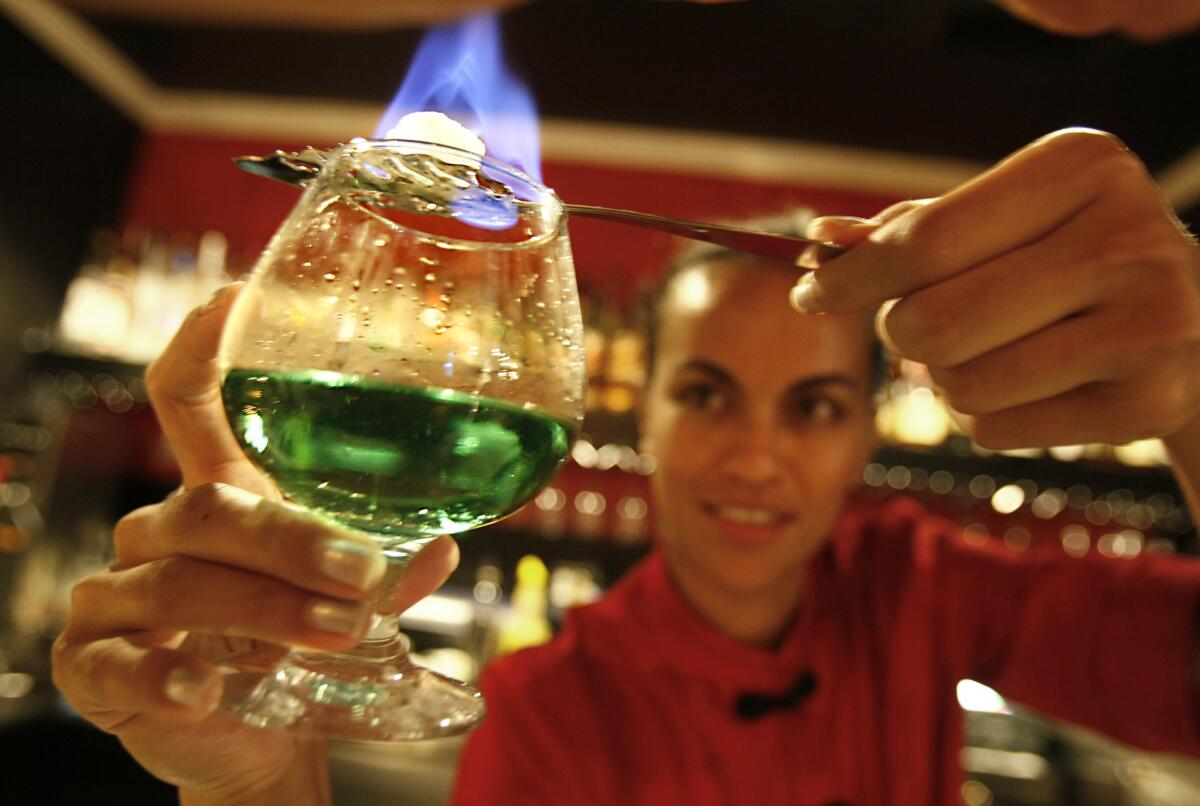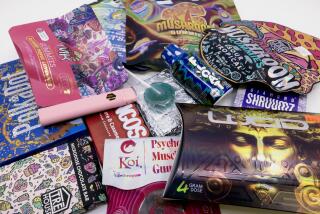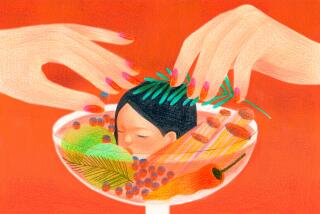Five things you thought you knew about absinthe

Think you know about absinthe? It’s not as mysterious as you think.
Does absinthe contain any drugs? Will you start hallucinating green fairies after a couple of sips? The myths and misinformation surrounding this potent herbal concoction are many. But which ones hold any merit?
We consulted T.A. Breaux, a Birmingham, Ala.-based distiller who reverse-engineers the contents of original, decades-old bottles of absinthe to come up with the closest possible reproductions for Jade Liqueurs. And the folks behind Jade Liqueurs are the same people who brought the first legalized absinthe, Lucid, to the U.S. market eight years ago.
We talked with Breaux (and sipped some absinthe) to clear up the facts.
Absinthe did not make Van Gogh go crazy. The drink is named for the herb Artemesia absinthium, also known as wormwood, which contains a substance called thujone. High doses of thujone can cause hallucinations and even seizures – but so can large concentrations of chemicals in such common herbs as fennel and hyssop. The temperance movement in the early 20th century seized on the unique wormwood ingredient to get absinthe outlawed in the United States and Europe until early in this century.
According to Breaux, it was all a smear campaign. “There’s not enough in there and there never was enough in there to cause any psychoactive effect whatsoever, said Breaux. As for rumors about absinthe causing Van Gogh’s insanity, Breaux believes he simply “had a lot of problems.”
“The biggest problem with absinthe, back then and today, is there’s no legal definition to protect the integrity and quality of the product,” said Breaux. Thus, cheap absinthe was adulterated with a lot of junk, such as copper sulfate to turn it green.
It doesn’t taste like licorice. There is zero licorice root in real absinthe. Any absinthe that tastes like a black jelly bean is most likely what absinthe aficionados call “crapsinthe”: “vodka, sugar, artificial flavors and green dye,” said Breaux. Real absinthe is flavored with aniseseed and fennel. The herbs’ natural sweetness is tempered by the herbal bitterness of wormwood. Other possible herbal additions include lemon balm, hyssop, spearmint, coriander, angelica and veronica. No sugar is added, although you can place a slotted absinthe spoon on top of your glass and pour cold water over a sugar cube in the French fashion if you like. Depending on the absinthe, the taste ranges from smooth, delicate and floral to pungent and spicy.
You’re not supposed to light it on fire. This is purely a 1990s-era “crapsinthe” invention, said Breaux. Real absinthe – which dates back to at least the 1700s in Switzerland as a medicinal elixir – louches (from the French for “shady”), which means that when you pour cold water slowly over clear absinthe in a glass, it gradually turns cloudy as the herbal essential oils are released. If there are no real essential oils in the alcohol, there will be no louching. Makers of bootleg cheap absinthe, specifically from the Czech Republic, needed to come up with some gimmick to distract from their concoction’s failure to louche. So why not light it on fire?
“You’ll not find one painting, one drawing, one description anywhere, depicting absinthe on fire,” said Breaux. “It’s ridiculous. Never happened.”
You can find decent absinthe in the U.S. “Once absinthe was legalized here, there was a worry that cheap stuff would flood the market,” said Breaux. “We didn’t want vodka dyed green.” Breaux is currently drafting legislation that would set quality standards for absinthe like there are for other forms of alcohol such as Champagne. (He thinks such standards will be formalized in the European Union and United States within the next year.) Breaux sees his mission as a “long-term program of consumer education, bartender education. My life is 15% distillation, 85% education.”
It’s not as potent as you think. True, absinthe is 50% stronger than vodka. “So for a cocktail that calls for 1½ ounces of vodka, you’d use an ounce of absinthe,” said Breaux. His Lucid variety is 124 proof, or 62% alcohol by volume. Breaux says absinthe can be substituted for vodka in just about any cocktail recipe — he suggests a “Bloody Fairy” in place of a traditional Bloody Mary, with a stalk of fennel for garnish instead of a celery stalk. He says absinthe works great in coladas, and in mojitos (without the lime).
ALSO:
Six of the most memorable, new local craft brews from 2015
Jones Coffee Roasters is opening a coffee shop at Vroman’s in Pasadena
Hey, Hawkeye fans, hit these 9 spots in Pasadena before (or after) the Rose Bowl game
More to Read
Eat your way across L.A.
Get our weekly Tasting Notes newsletter for reviews, news and more.
You may occasionally receive promotional content from the Los Angeles Times.








